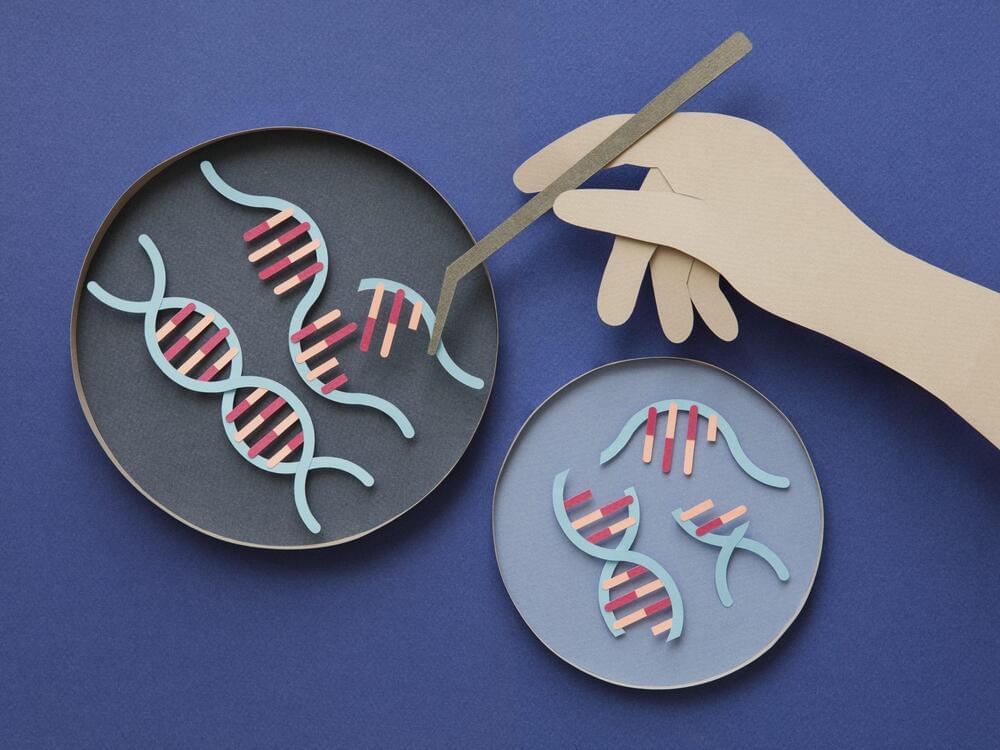Revolutionizing Gene Therapy: The Promise Of Improved CRISPR Modification

Table of Contents
CRISPR-Cas systems, a revolutionary gene-editing technology, have shown immense promise in gene therapy. This technology utilizes a guide RNA molecule to direct the Cas enzyme to a specific DNA sequence, allowing for precise gene editing. However, current CRISPR systems are not without limitations. Off-target effects—unintended edits at locations other than the intended target—and challenges in efficient delivery remain significant hurdles. Improved CRISPR modifications address these challenges, paving the way for safer and more effective gene therapies.
Enhanced Specificity and Precision in CRISPR-Cas Systems
Reducing Off-Target Effects
Off-target effects are a major concern in CRISPR-Cas9 gene editing. These unintended edits can lead to harmful consequences, limiting the clinical application of this technology. However, advancements in CRISPR technology have significantly reduced this risk. Improved CRISPR systems, such as base editors and prime editors, offer enhanced specificity and minimize off-target effects.
- Base editors: These systems utilize a modified Cas enzyme fused to a deaminase, enabling precise base changes (C-to-T or A-to-G) without causing double-stranded DNA breaks, reducing the chances of off-target effects. Studies have shown a significant decrease in off-target activity compared to traditional CRISPR-Cas9.
- Prime editors: A more advanced system, prime editors combine a reverse transcriptase with a nickase Cas enzyme, allowing for all 12 possible base-to-base edits and small insertions or deletions with even higher precision. Research demonstrates the exceptional accuracy of prime editors, leading to fewer off-target edits.
- David Liu's lab at the Broad Institute has been a pioneer in the development of base editors and prime editors, publishing numerous groundbreaking studies showcasing their improved specificity.
Improving Targeting Efficiency
Optimizing guide RNA design and engineering improved Cas protein variants are crucial for improving targeting efficiency. These advancements lead to increased on-target editing rates and further minimize off-target effects.
- Optimized guide RNA design: Algorithms and machine learning are used to predict and select guide RNAs with higher on-target activity and lower off-target potential.
- Improved Cas protein variants: Engineered Cas proteins with improved specificity and activity are being developed, enhancing the precision and efficiency of gene editing. Examples include high-fidelity Cas9 variants and modified Cas enzymes with improved binding affinity to target DNA. These improvements, demonstrated in numerous publications, lead to increased gene editing efficiency.
Advanced Delivery Methods for CRISPR Therapeutics
Viral Vector Enhancements
Viral vectors, particularly adeno-associated viruses (AAVs) and lentiviruses, are widely used for delivering CRISPR components into cells. However, limitations exist including immunogenicity and limited cargo capacity. Significant advancements are improving viral vector technology.
- Improved AAV serotypes: Researchers are identifying and engineering AAV serotypes with enhanced tissue tropism (target specificity), leading to more efficient gene delivery to specific cell types.
- Targeted delivery mechanisms: Strategies like peptide conjugation and antibody targeting are being explored to enhance the delivery of CRISPR components specifically to target cells, minimizing off-target effects and improving efficacy.
- Several clinical trials are underway utilizing these enhanced viral delivery systems, showcasing the promise of improved CRISPR delivery for treating various diseases.
Non-Viral Delivery Strategies
Non-viral delivery methods offer advantages over viral vectors, such as reduced immunogenicity and higher cargo capacity. However, their efficiency often lags behind viral methods. Current research is focused on improving non-viral delivery systems.
- Lipid nanoparticles: These nanoparticles encapsulate CRISPR components, protecting them from degradation and facilitating cellular uptake. Studies are showing improved efficacy in delivering CRISPR systems using optimized lipid nanoparticles.
- Electroporation: This method uses electric pulses to create temporary pores in cell membranes, allowing the entry of CRISPR components. This technique is effective in certain cell types and is being actively refined for improved delivery.
- The development of effective non-viral delivery systems remains an active area of research, with significant potential for improving gene therapy.
Expanding the Therapeutic Applications of CRISPR Technology
Targeting Previously Intractable Diseases
Improved CRISPR modification opens doors to treating diseases previously considered untreatable.
- Genetic disorders: CRISPR technology holds immense promise for correcting genetic defects responsible for numerous inherited disorders, including cystic fibrosis, sickle cell anemia, and Huntington's disease. Preclinical studies and early clinical trials have shown encouraging results.
- Cancer: CRISPR-based therapies are being developed to target cancer cells, enhancing the immune system's ability to destroy tumors or directly modifying cancer cells to eliminate them. Early clinical trials show promising results in this area.
- The potential applications of improved CRISPR modification extend to many other areas, including infectious diseases and metabolic disorders.
Addressing Ethical Considerations
The power of CRISPR technology necessitates careful consideration of ethical implications.
- Germline editing: Modifying the germline (sperm and egg cells) raises ethical concerns about unintended consequences across generations. Strict regulatory frameworks are essential to guide the responsible use of this technology.
- Accessibility and equity: Ensuring equitable access to CRISPR-based therapies is crucial to prevent disparities in healthcare.
- Open and transparent public discussions are vital to establish guidelines for the responsible development and application of improved CRISPR modification.
Conclusion
Improved CRISPR modification represents a significant leap forward in gene therapy. Advancements in specificity, delivery methods, and therapeutic applications are revolutionizing the field. The reduced off-target effects, increased targeting efficiency, and expanded therapeutic potential of improved CRISPR systems are paving the way for safer and more effective gene therapies. These advancements hold immense promise for treating a wide range of debilitating diseases. Stay informed about advancements in improved CRISPR modification and explore the future of gene therapy with improved CRISPR techniques. Discover how improved CRISPR modification is changing the landscape of gene therapy and its potential to transform healthcare.

Featured Posts
-
 Nueva Alianza Setlist Fm Y Ticketmaster Ofrecen Una Experiencia Superior
May 30, 2025
Nueva Alianza Setlist Fm Y Ticketmaster Ofrecen Una Experiencia Superior
May 30, 2025 -
 Mesets Ekstremna Zhega Nad Polovinata Ot Sveta E Zasegnat Prez 2024 G
May 30, 2025
Mesets Ekstremna Zhega Nad Polovinata Ot Sveta E Zasegnat Prez 2024 G
May 30, 2025 -
 Des Moines Police Respond To Car On Its Side Investigation Details
May 30, 2025
Des Moines Police Respond To Car On Its Side Investigation Details
May 30, 2025 -
 Record Rainfall San Diego Batters By Late Season Winter Storm
May 30, 2025
Record Rainfall San Diego Batters By Late Season Winter Storm
May 30, 2025 -
 Kawasaki Ninja Price Drop R45 000 Discount Available
May 30, 2025
Kawasaki Ninja Price Drop R45 000 Discount Available
May 30, 2025
